- ABOUT
- EXPLORE
- Tips for Hiking the Trail
- General Outlook of the Trail
- Sec.1 (Mt. Madarao - Aka Ike pond)
- Sec.2 (Aka Ike pond - Wakui)
- Sec.3 (Wakui - Hotoke ga Mine Tozanguchi)
- Sec.4 (Hotoke ga Mine Tozanguchi - Sekida Toge pass)
- Sec.5 (Sekida Toge pass - Busuno Toge pass)
- Sec.6 (Busuno Toge pass - Mt. Amamizu)
- Sec.7 (Mt. Amamizu - Mori-Miyanohara Station)
- Sec.8 (Mori-Miyanohara Station - Ketto)
- Sec.9 (Ketto - Koakasawa)
- Sec.10 (Koakasawa - Mt. Naeba)
- Access
- Town Maps
- Visitor Centers
- Guided Hiking
- Stay
- Trail Etiquette
- Hiking Awards
- GET INVOLVED
- NEWS & EVENTS
- FAQ
- Home
- Shin-etsu Trail Stories
- #4 A long trail created by local people
Shin-etsu Trail Stories
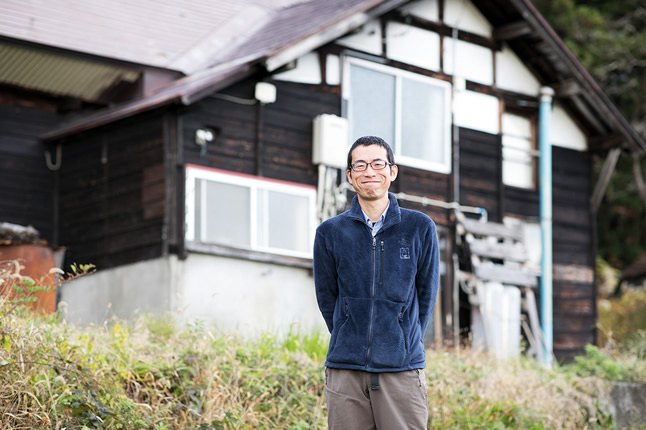
Text and photos by Trails magazine; Editorial supervision: Trails
#4 A long trail created by local people
Working to create a trail loved by locals
The thoughts and special skills of local people combined to create the Trail’s charm
1. Mikio Enomoto
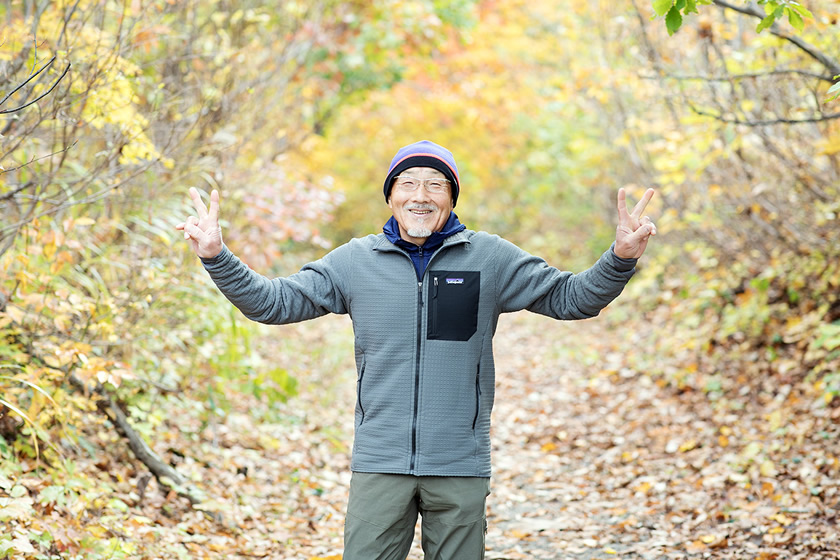
Mikio Enomoto, active as a top guide since the establishment of the Shin-etsu Trail Guide organization
First up is Enomoto-san. He is the top Shin-etsu Trail guide, has a bright personality and welcomes many people to hiking on the Trail.
Before working on the Trial, he ran a small hotel in his hometown, Madarao, and was a ski instructor. He is an impressive person, with a way of talking that makes people smile.
Q: How did you get involved in the Shin-etsu Trail?
Enomoto: It was about the time when the first 50-kilometer section opened. An acquaintance invited me to get involved. When I heard that there was a trail 50 kilometers long, I wanted to try it myself, of course.
Q: We have heard that you’re a very fun and popular guide. Were you working as a guide previously?
Enomoto: No, I wasn’t. I was in the hospitality business as a hotel owner and ski instructor, and I enjoyed talking with people. The most important thing in guiding is safety. Then, on top of that, I want the people who come here to enjoy it.
Q: We’ve heard that there are more overseas guests being guided on the Trail. Can you speak English?
Enomoto: (In English) Just a little (laughs). When I see so many international travelers coming here, I’m glad that we’ve been involved this far.
2. Kengo Mizushima
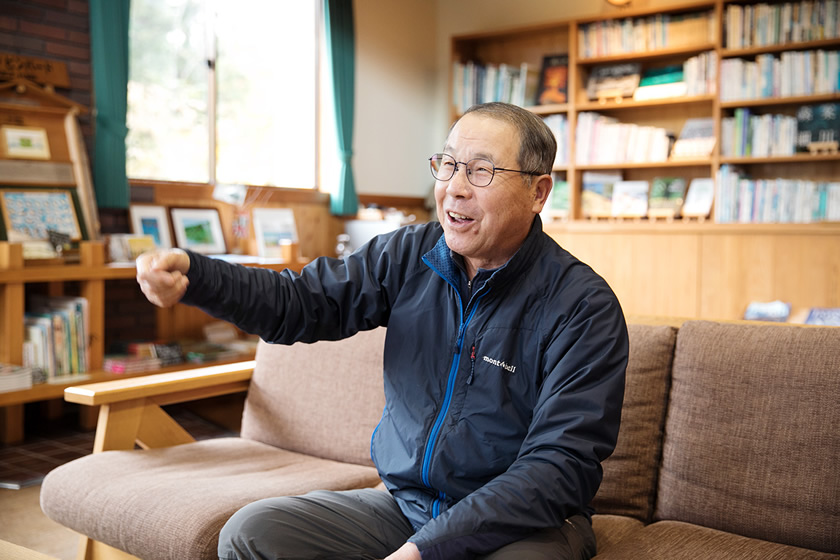
Like Enomoto-san, Kengo Mizushima is a top guide on the Shin-etsu Trail. He is very familiar with the area’s history
Mizushima-san was originally a researcher of local history, and is very familiar with the stories of the local area.
He heard about the Shin-etsu Trail, and wanted to take advantage of his knowledge and convey the attractions of the area, so became involved with Trail activities.
Q: Why did you decide to guide on the Shin-etsu Trail?
Mizushima: I first learned about it when I was 60 years old. I was still able to work at the company I was at for another five years, but I decided to break with it and quit. I had a pretty good knowledge of the area and experience here, and I wanted to convey this knowledge to others. I always liked nature, so I started to work as an instructor at one of the nature centers in the area.
Q: We’ve heard that the history of the mountain passes in the Sekida Mountains is very complicated.
Mizushima: There is a history and stories behind each of the Sekida Mountain passes. These were used as military roads during one of the biggest battles of the Warring States period. They were also trade routes between Niigata and Nagano. Salt was carried by oxen from Niigata, while paper, straw and wax were brought from the Nagano side. When I was guiding I told my customers these stories, and was always grateful when they’d say, “I’ll come back again.”
People who enjoy the mountains also participate in trail building
3. Takashi Biyajima
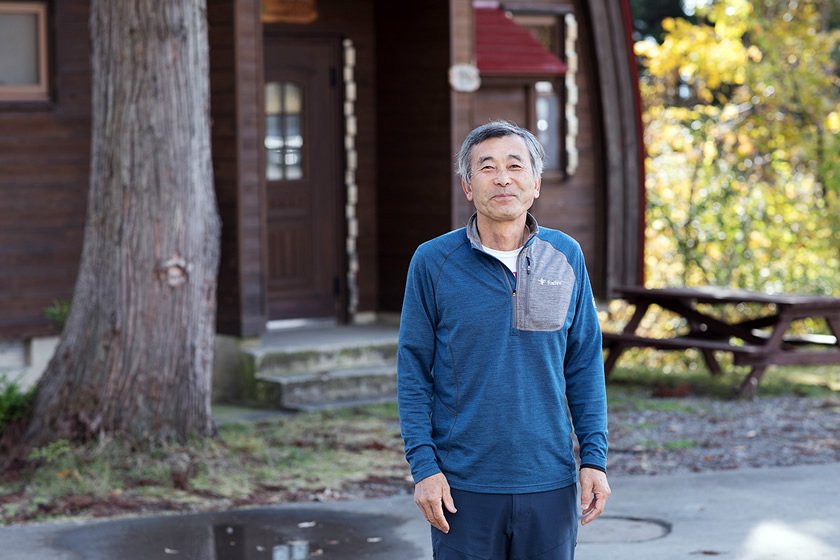
Like Enomoto-san, Kengo Mizushima is a top guide on the Shin-etsu Trail. He is very familiar with the area’s history
Mizushima-san was originally a researcher of local history, and is very familiar with the stories of the local area.
He heard about the Shin-etsu Trail, and wanted to take advantage of his knowledge and convey the attractions of the area, so became involved with Trail activities.
Q: Why did you decide to guide on the Shin-etsu Trail?
Mizushima: I first learned about it when I was 60 years old. I was still able to work at the company I was at for another five years, but I decided to break with it and quit. I had a pretty good knowledge of the area and experience here, and I wanted to convey this knowledge to others. I always liked nature, so I started to work as an instructor at one of the nature centers in the area.
Q: We’ve heard that the history of the mountain passes in the Sekida Mountains is very complicated.
Mizushima: There is a history and stories behind each of the Sekida Mountain passes. These were used as military roads during one of the biggest battles of the Warring States period. They were also trade routes between Niigata and Nagano. Salt was carried by oxen from Niigata, while paper, straw and wax were brought from the Nagano side. When I was guiding I told my customers these stories, and was always grateful when they’d say, “I’ll come back again.”
4. Koji Saito
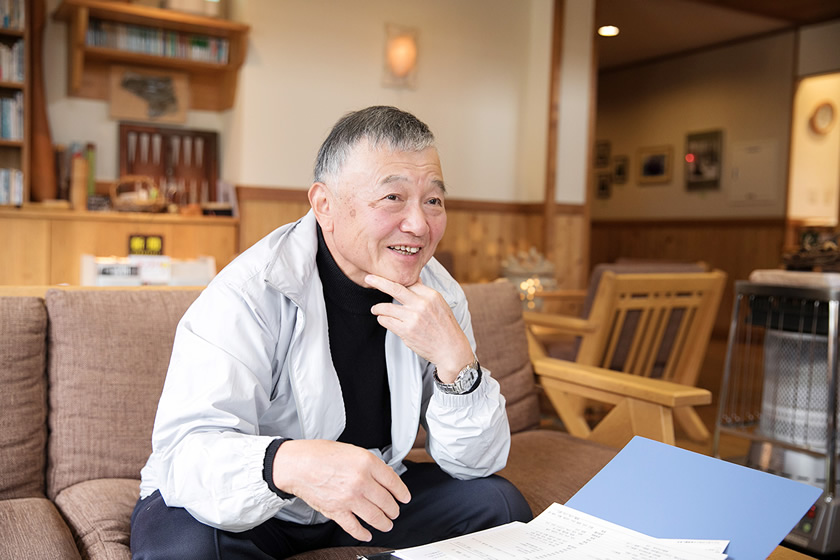
Falling in love with the snowy Sekida Mountains led Saito-san to take part in route planning for the Shin-etsu Trail.
Saito-san, along with Biyajima-san, was involved in creating the route from Maki Tōge pass to Mt. Amamizu. And like Biyajima-san, he became attached to the area by playing in the Sekida Mountains.
Q: Please tell us how you got involved with the Shin-etsu Trail.
Saito: I used to camp in a tent or snow cave in the Sekida Mountains in winter. The snow in these mountains is different from anywhere else in the world. I began going here every year, and I fell in love with this mountainous area. Participating in trail maintenance was also a way of saying thank you for being allowed to play in these mountains.
Q: You were also involved in the early reconnaissance activities for the Shin-etsu Trail.
Saito: There was a hiking tour of the Sekida Mountains that was also to serve for reconnaissance, which I took part in. Apart from the Shin-etsu Trail project, I also explored an unopened section with Biyajima-san and other people. I have a record of that hike, which was right on the prefectural border, so I think it almost overlaps the current route. I later handed that record over to the Shin-etsu Trail staff.
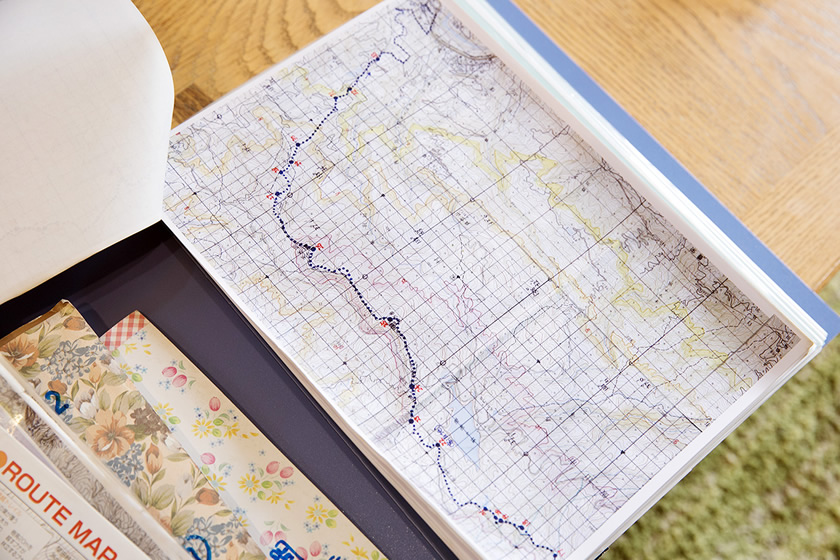
A detailed record of the route search, created by Saito-san
From the beginning, local people with a variety of specialties and interests—service professionals, history researchers, experts in orienteering, people who love snowy mountain nights, etc.—became interested in the Shin-etsu Trail, and joined in its creation. Even today these locals support the Trail as guides and maintenance volunteers.
The next two people became involved for different reasons.
INDEX
- #01: Noriyoshi Kato InterviewEncounter the miracle on the Trail
- #02: Creating a long trailThe story behind the birth of the Shin-etsu Trail
- #03 Volunteers continue to protect the TrailHow to build and maintain a long trail
- #4 A long trail created by local peopleWorking to create a trail loved by locals
- #5 The life of Noriyoshi KatoA rebellious spirit, and a hope for long trails
- #6: Report on route extensionA look at the new 40-kilometer section


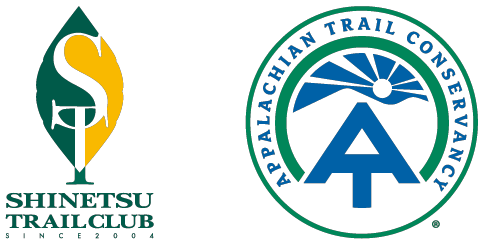
This fourth Shin-etsu Trail Story reports on story of the Shin-etsu Trail, focusing on the local people.
Shin-etsu Trail Story #2 told the story of the birth of the Trail. This was mainly about the outward side of the tale; at the same time, behind the scenes the thoughts and the efforts of the local people were also deeply involved in the founding of the Shin-etsu Trail. These are the people who poured their spirit and their love into the Trail.
Noriyoshi Kato, a leading figure in the development of long trails in Japan, as insistent that a long trail must be loved by the local people. The creation of a long trail is not the end, because maintaining it is very important. For that goal, the understanding, empathy and affection of the local people are indispensable.
In this article, we asked eight people living near the Shin-etsu Trail to talk about their encounters with and thought about the Shin-etsu Trail.
Shin-etsu Trail Stories
How does the Shin-etsu Trail attract people and drive them to talk on a long-trail journey? There is the philosophy of Noriyoshi Kato, the history behind its birth, and the support of the local people. They are trying to rediscover something else within themselves, something that has been reported on over many years in this series of articles produced by the Trails editorial team (thetrailsmag.com).